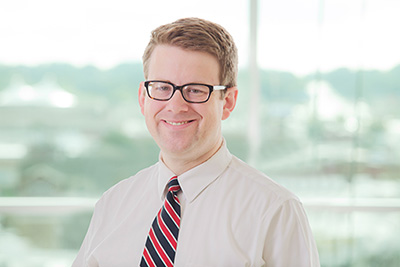
Arrhythmias, abnormal heart rhythms characterized by rapid and irregular beating, come in different forms. They can come and go unpredictably. Symptoms can be mild, such as an occasional skipped or fluttering heartbeat that might be attributed to other causes such as panic attacks, anxiety, dehydration or “just getting older.” More serious symptoms include chest tightness, shortness of breath, exercise intolerance or even losing consciousness.
The most common arrhythmia is atrial fibrillation. It increases with age and occurs in as many as one in 10 people over 80. “While it may seem more like a nuisance, atrial fibrillation should not be ignored,” says J. William Schleifer, MD, cardiologist at Nebraska Medicine, who specializes in the treatment of arrhythmias. “As the disease progresses, it can significantly increase your risk for stroke and congestive heart failure. It also becomes more difficult to treat the longer you have it.”
To schedule an appointment with a cardiologist, please call us at 800.922.0000.
Atrial fibrillation occurs when the electrical signals that control your heartbeat go haywire. The atria, or small upper chambers of your heart, quiver rapidly instead of contracting fully. As a result, your heart can’t pump blood properly. “The heartbeat becomes irregular, and often is too fast or too slow in atrial fibrillation,” Dr. Schleifer adds.
The most common contributors to atrial fibrillation include age, heart disease, high blood pressure, obesity and associated conditions like obstructive sleep apnea. “As people live longer and survive better with heart disease, we are likely to see more and more people develop atrial fibrillation,” says Dr. Schleifer.
“People who have atrial fibrillation need to be evaluated by their doctor or an electrophysiologist who specializes in arrhythmia treatment. In addition to getting treatment for your atrial fibrillation, you may also need blood thinners to reduce your stroke risk. This is especially true for women over the age of 65 and men over 75.”
Many types of arrhythmias are treatable with medications or ablation. With ablation procedures, the areas in the heart that are triggering the arrhythmia are identified. Heat or cold energy is then used to destroy the pathways to the heart that are causing the arrhythmia. “These procedures do not affect the heart muscle function,” says Dr. Schleifer. “However, since no procedure is entirely risk free, an ablation may not be the right treatment for every patient. That’s why we take time to discuss all of the options with you.
“About 60 to 70 percent of patients will get relief with anti-arrhythmic medications. In patients with a normal heart and atrial fibrillation that comes and goes, we anticipate a 70 to 80 percent likelihood they will remain free of atrial fibrillation after an ablation. In patients who have had more sustained atrial fibrillation for longer periods of time, such as weeks, months or even years, the success rates are lower but still above 50 percent.”
Getting treated at a center with more experience is important because it gives you more options. “Different strategies work best for different people and at Nebraska Medicine we have experienced physicians, nurses and techs trained in electrophysiology who are focused on providing the best patient care and treatment,” says Dr. Schleifer. “Our goal is always to substantially reduce the risk from these procedures, reduce complication rates and respond promptly if complications were to occur.”


